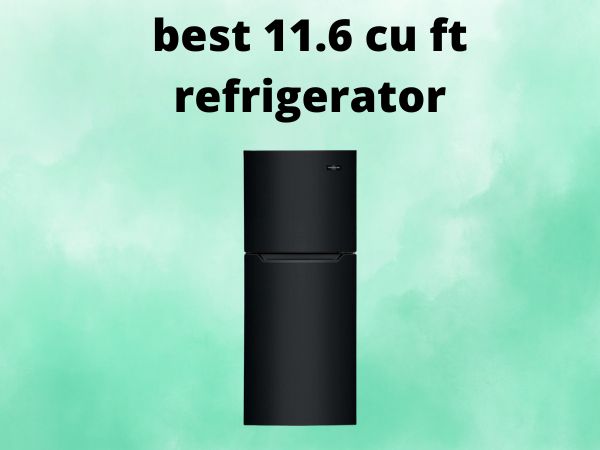3-Door vs 2-Door Refrigerator: Design, Storage, and Efficiency Compared
When it comes to refrigerators, the choice between a 3-door and a 2-door model can be a bit overwhelming. Both offer unique features and benefits, making it crucial to understand the differences to determine which one best suits your needs. In this comprehensive article, we’ll dive into the key factors to consider when selecting between a 3-door and a 2-door refrigerator, including design, storage, and energy efficiency.
Table of Contents
The Design Difference
One of the most noticeable differences between a 3-door and a 2-door refrigerator is the design. A 3-door refrigerator typically features a larger overall size, with the third door often located at the bottom, providing easy access to a freezer compartment. This layout can be particularly convenient for families or those who require ample storage space.
In contrast, a 2-door refrigerator has a more traditional design, with the freezer compartment located at the top or bottom of the unit. This can be a more compact option, making it suitable for smaller kitchens or households with limited space.
Aesthetic Considerations
Beyond the functional aspects, the design of a refrigerator can also play a significant role in the overall aesthetic of your kitchen. 3-door models often have a more modern and sleek appearance, with a larger, more prominent presence in the room. 2-door refrigerators, on the other hand, can blend in more seamlessly with a traditional or minimalist kitchen design.
When selecting a refrigerator, it’s important to consider how the design will complement the existing decor and layout of your kitchen. Choosing a refrigerator that aligns with your personal style and the overall aesthetic of the space can enhance the visual appeal of your kitchen.
Storage Capacity and Flexibility
Another crucial factor to consider is the storage capacity and flexibility offered by each refrigerator type. 3-door models generally provide more overall storage space, with the additional door allowing for a dedicated freezer compartment. This can be beneficial for families or individuals who require ample storage for both fresh and frozen items.
Furthermore, the layout of a 3-door refrigerator often allows for greater flexibility in organizing and accessing your groceries. The separate freezer compartment can make it easier to find and retrieve specific items, while the main refrigerator section can be divided into zones for different food types.
Shelving and Adjustability
Both 3-door and 2-door refrigerators offer various shelving and storage options, but the configurations may differ. 3-door models often feature more adjustable and customizable shelving, allowing you to accommodate taller items or rearrange the interior to suit your needs. 2-door refrigerators may have a more limited shelf layout, but they can still provide ample storage space.
When evaluating storage capacity, it’s essential to consider the specific dimensions and layout of the refrigerator, as well as your household’s storage requirements. Measuring the available space in your kitchen and assessing your typical grocery shopping habits can help you determine the optimal refrigerator size and configuration.
Energy Efficiency and Cost
Energy efficiency is another crucial factor to consider when choosing between a 3-door and a 2-door refrigerator. In general, 2-door models tend to be more energy-efficient, as they have a smaller overall footprint and require less energy to maintain the desired temperature.
However, it’s important to note that the energy efficiency of a refrigerator can also be influenced by factors such as insulation, compressor technology, and energy-saving features. Researching the Energy Star ratings and energy consumption data for specific models can help you make an informed decision and potentially save on your utility bills in the long run.
Cost Considerations
The cost of a refrigerator is another crucial factor to consider. 3-door models typically have a higher price tag compared to their 2-door counterparts, primarily due to their larger size and additional features. However, it’s essential to weigh the initial cost against the long-term energy savings and the overall value the refrigerator provides.
When budgeting for a new refrigerator, be sure to factor in not only the purchase price but also the ongoing energy costs and any potential maintenance or repair expenses. This holistic approach can help you make the most informed decision and ensure you get the best value for your investment.
Conclusion
Choosing between a 3-door and a 2-door refrigerator involves carefully considering various factors, including design, storage capacity, energy efficiency, and cost. While 3-door models offer a larger overall footprint and dedicated freezer compartment, 2-door refrigerators can be a more compact and energy-efficient option.
Ultimately, the decision will depend on your specific needs, kitchen layout, and personal preferences. By carefully weighing the pros and cons of each refrigerator type, you can make an informed choice that best suits your household and ensures a seamless integration into your kitchen.
FAQs
What are the key differences between a 3-door and a 2-door refrigerator?
The main differences between a 3-door and a 2-door refrigerator include the overall design, storage capacity, and energy efficiency. 3-door models typically offer a larger footprint with a dedicated freezer compartment, while 2-door refrigerators have a more compact and traditional layout.
Which refrigerator type is more energy-efficient?
In general, 2-door refrigerators tend to be more energy-efficient compared to 3-door models, as they have a smaller overall footprint and require less energy to maintain the desired temperature. However, the energy efficiency of a refrigerator can also be influenced by factors such as insulation, compressor technology, and energy-saving features.
How do the storage capacities of 3-door and 2-door refrigerators differ?
3-door refrigerators typically offer more overall storage space, with the additional door allowing for a dedicated freezer compartment. This can be beneficial for larger households or those who require ample storage for both fresh and frozen items. 2-door models, on the other hand, may have a more limited storage capacity but can still provide sufficient space for many households.
What are the cost differences between 3-door and 2-door refrigerators?
3-door refrigerators generally have a higher price tag compared to 2-door models, primarily due to their larger size and additional features. However, it’s essential to consider the long-term energy savings and overall value the refrigerator provides, as 2-door models may be more energy-efficient but may not offer the same level of storage capacity and flexibility.
How do the aesthetic differences between 3-door and 2-door refrigerators impact kitchen design?
The design of a refrigerator can significantly influence the overall aesthetic of a kitchen. 3-door models often have a more modern and prominent appearance, while 2-door refrigerators can blend in more seamlessly with traditional or minimalist kitchen designs. When selecting a refrigerator, it’s essential to consider how the design will complement the existing decor and layout of your kitchen.


